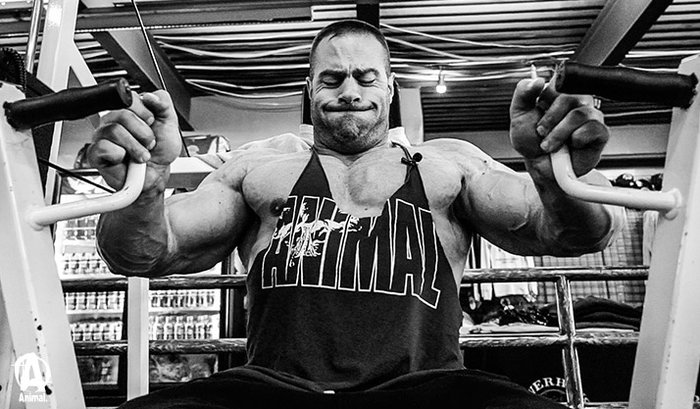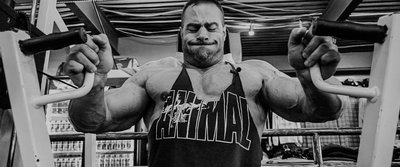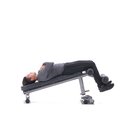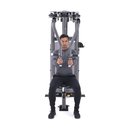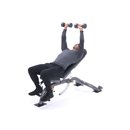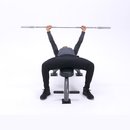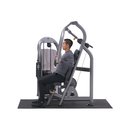You have 10 muscle groups to train: chest, back, quads, hams, calves, shoulders, biceps, triceps, forearms, and abs. What's the best way to order them so you can hit them hard enough and allow for sufficient recovery?
You have plenty of options. You can have an upper-body day and a lower-body day. You can give each body part its own day. Or you can split up chest, back, and legs, then combine the remaining body parts in a way that makes the most sense to you. The last option is the one that I have found to work best for me.
What each of us wants is simply effectiveness; we want a split that will allow us to make progress. It's a given that we need to train in order to elicit a physical response. The question is how often to train a muscle group (frequency) and with what volume and intensity. What is an effective stimulus and how long do you need to recover from that stimulus? The answer is different for everyone.
Want to lose muscle? Train the same exact muscle groups for hours and hours each day, seven days a week. Want to gain muscle? Vary the muscle groups trained each day, overload each muscle group just enough to prompt an adaptive response, and then allow the body sufficient time to recover. Of course, other factors such as diet, supplementation, and individual metabolism are critically important, but in this conversation, we'll talk strictly about training. I'm also going to assume that your goal is to increase muscle mass.
Here's how I give my muscles all they need, but not more than they can handle.
Learning the Hard Way
As a teenager, I started out overzealously, working every body part twice per week and performing every exercise under the sun for each muscle group. When you don't really know what you're doing, you sometimes try to do everything in an attempt to leave no stone unturned. You've heard of throwing shit at the wall in the hopes that at least some will stick, right? I've been there, done that.
At 15 years old, it wasn't uncommon for me to lift weights for three hours each day, trying to do as many sets as I could of every exercise I knew for each muscle group. A typical day covered three muscle groups.
It didn't take long for me to realize that what I was doing didn't make any sense. I often found myself too tired to put a full effort into the muscle groups that came later in my workouts. And as time went on, I started to feel less and less enthusiastic about training. But the telltale sign was that I was actually losing strength and not gaining any size!
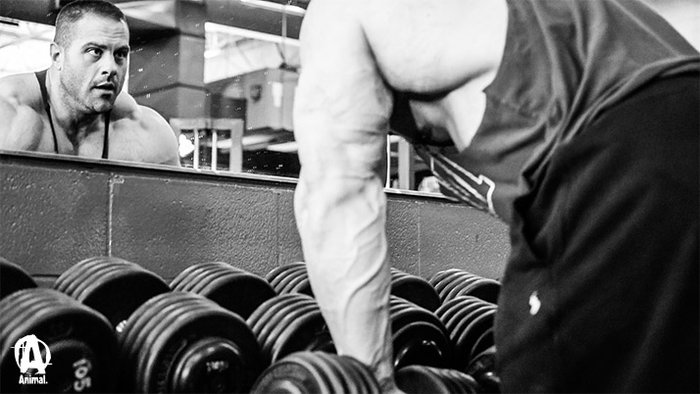
{{caption}}
I decided to cut down on the number of movements and sets I did for each muscle group, but kept the basic structure the same, while focusing on pushing my limits and consistently outdoing my previous bests. However, within each workout, I still felt unable to give a maximum effort to the muscle groups that came later in the workout.
It wasn't until I made the decision to train each major muscle group once per week that I began to notice improvement in my development and strength. Despite being told that too much training can be counterproductive, I had to learn it for myself.
The Recovery Sweet Spot
After I had been training for a while, it became apparent to me that certain muscle groups were more demanding to train and had a greater impact on my recovery than others. For example, chest, back, and leg movements like heavy presses, squats, deadlifts, and rows all took a toll in order for me to adequately train them. I realized that it made the most sense to base my split around those three muscle groups, never train them on the same day as one another, and try to avoid training them on back-to-back days.
I could do chest on a Monday and legs on a Tuesday and perform well on both days, but when I did legs on Monday, Tuesday's chest workout would suffer. I structured my training to do no more than one large muscle group per day, and if I was going to train another muscle on that day, it would be a smaller muscle group. For example, adding abs and or biceps to chest day, as I did in the video, works well for me. I'm able to warm up or finish off with some ab work, give the greatest amount of effort to chest, and still have plenty left in the tank for biceps. To be fair, arms have always been one of my more easily developed muscle groups, so adding it to chest day works just fine.
Why not an arm day? In the past, giving arms their own day resulted in arm development disproportionate to my body. It was also a waste of a day that could be spent either busting my ass on a body part that really needed it or simply resting and recovering.
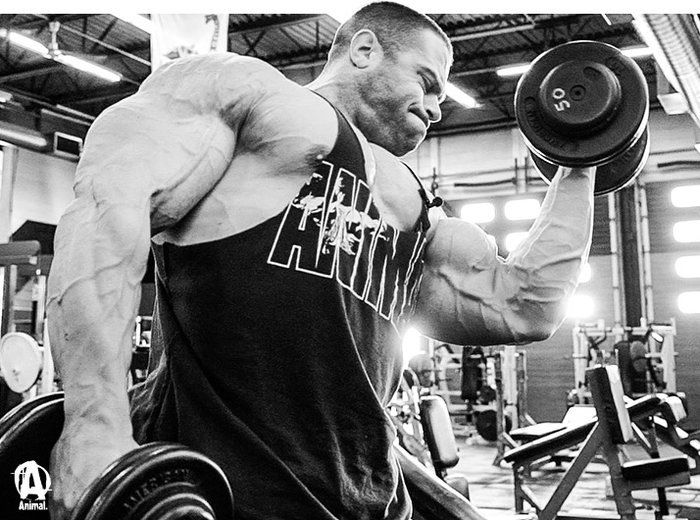
{{caption}}
Here's the takeaway for you, the (presumably) non-pro: in developing your split, do give thoughtful consideration to which muscle groups need more attention and rest. If you're training three separate muscle groups on a given day, the attention you give to each will necessarily suffer. Similarly, if you decide to train Monday through Friday, chances are your week will start out strong, and by the time Friday arrives, you will be dragging ass.
For me, three straight days of training before taking a day of rest is my maximum. Currently, I train four days per week. This allows me to have a day of rest before and after every training day with the exception of my back-to-back Friday and Saturday sessions. This allows me to divide muscle groups enough so that I can give each enough stimulation and enough rest, but not spend my life in the gym.
The Rationale Behind My Split
My current split is as follows:
- Sunday: Off
- Monday: Back and calves
- Tuesday: Off
- Wednesday: Quads and hams
- Thursday: Off
- Friday: Chest, abs, and biceps
- Saturday: Delts and triceps
With this split, I find that all body parts get adequately stimulated, and only four days in the gym means more recovery. But that's just the big picture. Here is my thinking for the details:
Rest days before and after back and legs. These are the two most demanding body parts to train, and the two largest muscle groups in the body. If trained properly, they will be the hardest to recover from.
Rest day before chest. Chest is one of my weaker body parts. That way, I'll be fresh and able to hit it hard.
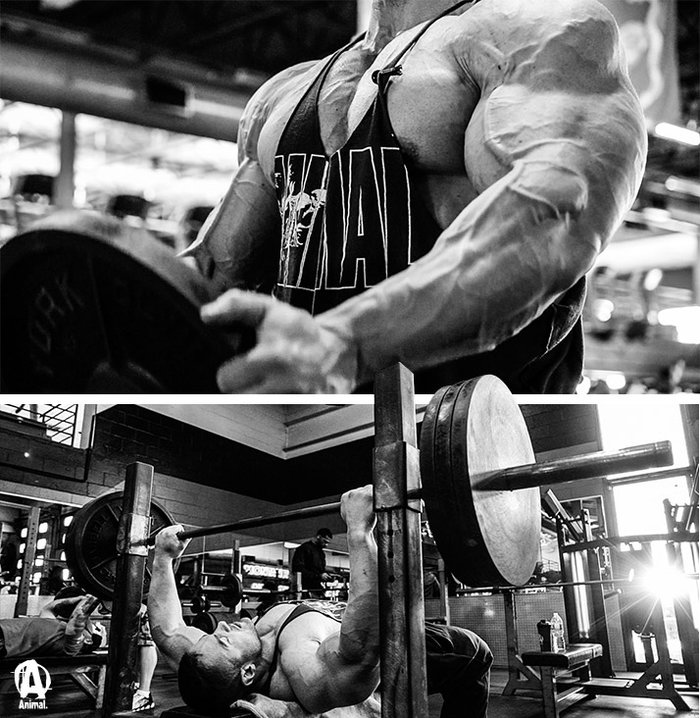
Biceps and abs trained with chest. Chest training isn't very hard on the nervous system, and neither biceps nor abs require a ton of effort to adequately train. Do biceps after chest rather than triceps, because they are still fresh and not fatigued by chest training.
Shoulders and triceps the day after chest. This might look strange, but I have good reasons. If I took another day off, it would make for an eight-day training cycle, and that would annoy me. I prefer the order and predictability of seven days. Also, if I did chest after shoulders, it would significantly impact my chest training in a negative way, because chest is a bigger muscle.
In my experience, it's better to train bigger muscle groups before training smaller ones. Although triceps are used on shoulder presses, they're not significantly affected and can still be trained with maximum effort after shoulder training.
Rules For Constructing Your Split
- Train chest, back, and legs each on separate, nonconsecutive days.
- Train large muscle groups first in each workout.
- Avoid muscle groups that will be used in the next day's workout. Example: Don't train triceps or shoulders the day before chest.
- Strength train as frequently as possible, as long as recovery is not compromised.
- Focus on stimulating each muscle group each week rather than doubling frequency.
- Maximize your time in the gym. Try to accomplish your work in less time and fewer sets.
- Overload!
